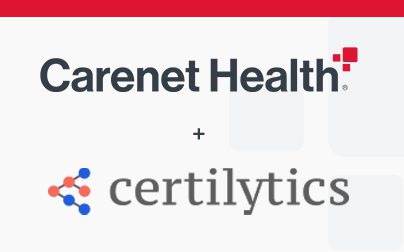Gaps in care are an increasing problem for healthcare organizations. During the pandemic, 40% of U.S. adults delayed or avoided medical care. At any given time, four out of five Medicare patients fail to get an annual wellness visit, and only 8% of adults over 35 comply with recommended preventative health services.
For many health plan members and patients with chronic or other health issues, there are a number of obstacles to obtaining medical care. These barriers can range from a growing clinician shortage to a lack of reliable transportation to living far from care. These issues are often exacerbated for rural patients. (In fact, data shows that less than 8% of all physicians and surgeons choose to practice in rural settings.)
At the same time, there is an increasing prevalence of chronic disease and an expanding and aging population. Additionally, pandemic-related concerns have some patients hesitant to seek in-person care.
The confluence of all these trends has made closing care gaps more challenging than ever for health plans. Yet resolving lingering care gaps remains critical to your members’ and your organization’s health.
The good news is that offering telehealth and at-home care alternatives can be an effective strategy to improve your HEDIS® engagement and get members the preventative care they need while circumventing many of the obstacles that may have been causing missed appointments.
Telehealth is now a tried, tested and adopted care solution, even for annual wellness visits
The trend is clear: Nearly half of all healthcare consumers are using telehealth for some health need, according to McKinsey and Company.
By offering telehealth to members when scheduling HEDIS-related appointments, including annual wellness visits, you can overcome many of your members’ hesitations. For instance, if a member’s main hesitation is that they don’t think they have time for a medical appointment right now, you can counter with the convenience of telehealth. Some appointments can be as short as 15-30 minutes, and there’s no additional travel time.
According to the Community Preventative Services Task Force, telehealth can also be beneficial in increasing healthcare engagement around treating and managing chronic disease risk factors in patients. In particular, telehealth can improve medication adherence, clinical outcomes (such as blood pressure control) and dietary outcomes (such as reducing sodium intake).
At-home care alternatives can increase HEDIS engagement
In a survey by PwC Health Research Institute, three-quarters of consumers surveyed said they were willing to get in-home care for needs ranging from a well visit to chronic disease management. This is also good news for boosting your HEDIS engagement scores and closing care gaps.
At-home care can cover chronic conditions, such as testing for diabetes and preventative screenings, such as colon cancer tests. Additionally, mobile phlebotomy networks and at-home MD organizations can offer care for everything from wellness exams to lab draws to post-recovery follow-ups.
At-home care also has the added potential to unlock “higher-quality of care for consumers at a lower cost for health systems,” according to McKinsey and Company. By 2025, McKinsey predicts that an estimated $265 billion worth of care services (representing up to 25% of the total cost of care) for Medicare and Medicare Advantage beneficiaries could shift to at-home care.
Using appointment scheduling technology to make closing care gaps easier
When doing outreach to members to address HEDIS care gaps, having a simplified approach to connecting and coordinating care can make it much easier for both members and providers to schedule the appropriate care—whether that’s at home or via telehealth.
The Carenet Health digital platform’s turnkey solution can make facilitating telehealth and at-home care faster and easier, further enabling health plans and providers to close care gaps and increase HEDIS engagement scores.
—
For more 10 more best practices for improving your health plan’s HEDIS engagement, download our popular ebook: Health Plan HEDIS Best Practices Guide. Or contact us directly to start a conversation.
More about the pioneering Carenet Health approach to closing gaps in care
Our enhanced approach to closing gaps in care leverages the patented, first-of-its-kind, open-network technology of the Carenet Health digital platform to combine a digital-first orchestration of care with best-in-calls live phone outreach as needed.
The service harnesses the power of the patient-provider relationship to motivate both members and providers to take action—with no integration or sign-in required for anyone.
The result? Convenient appointment scheduling, extreme efficiencies, happy patients and providers, and most importantly, better health outcomes.
Please reach out if you’d like to learn more.
Note: HEDIS® is a registered trademark of the National Committee for Quality Assurance (NCQA).



